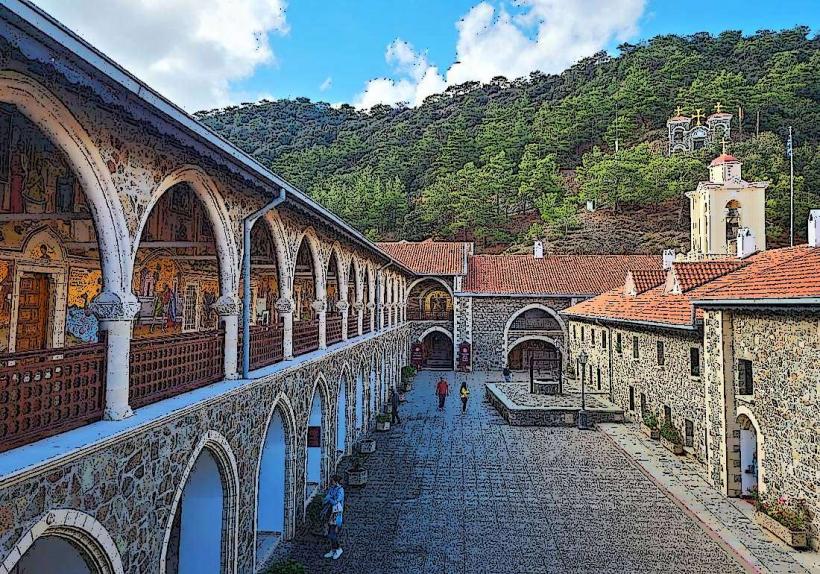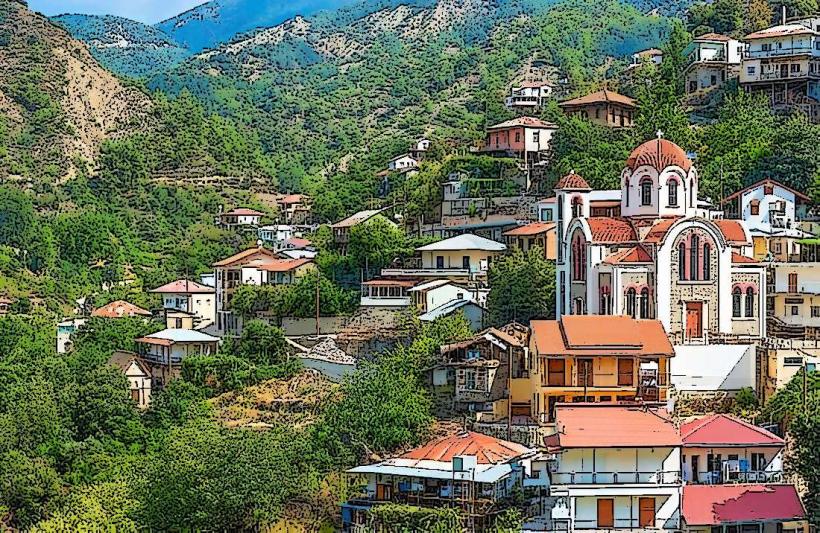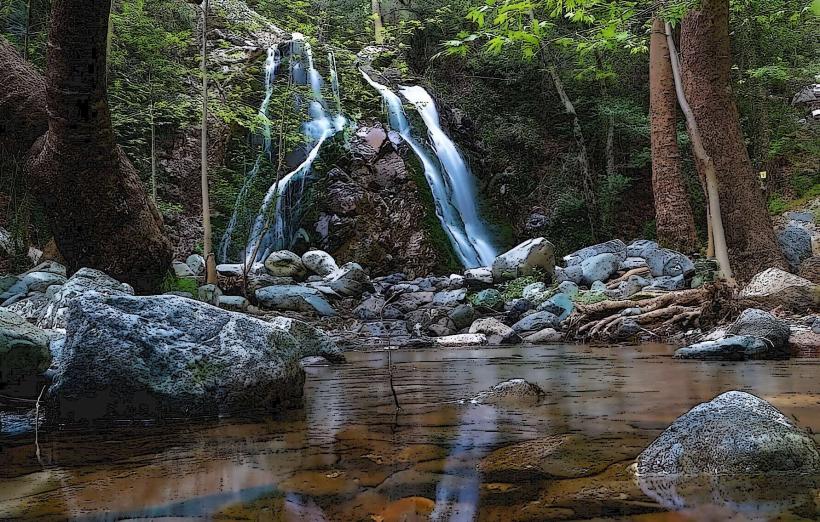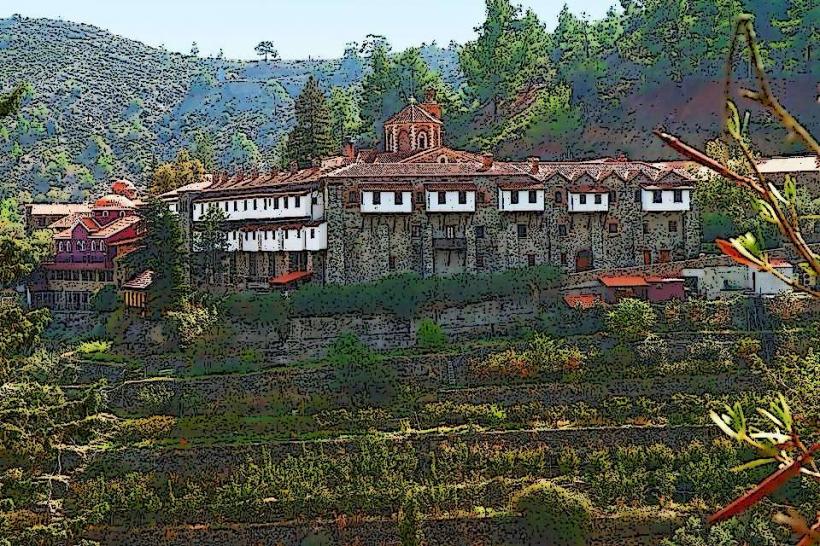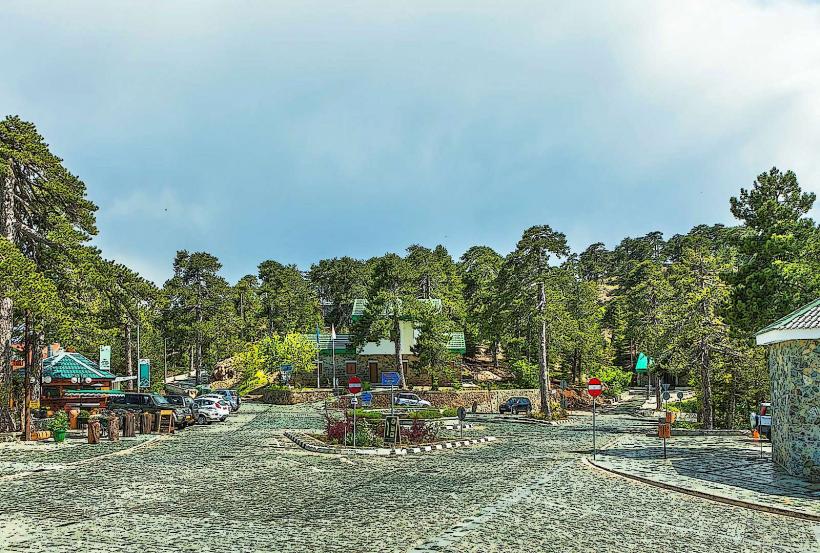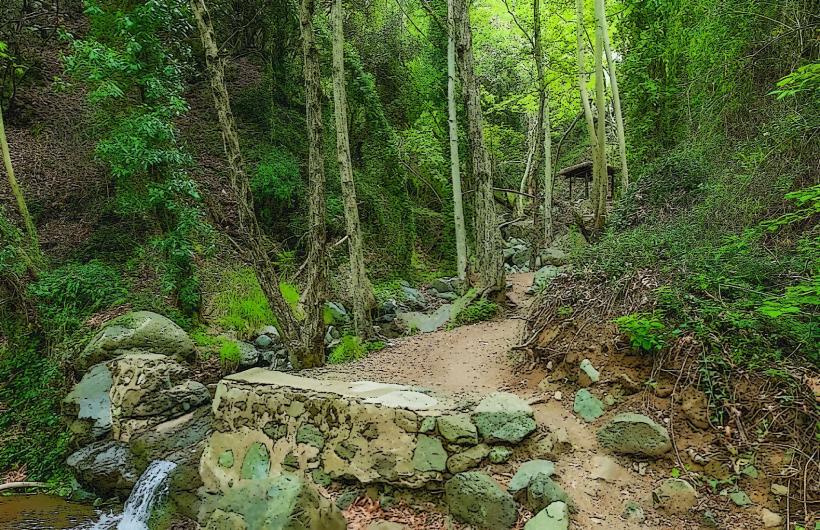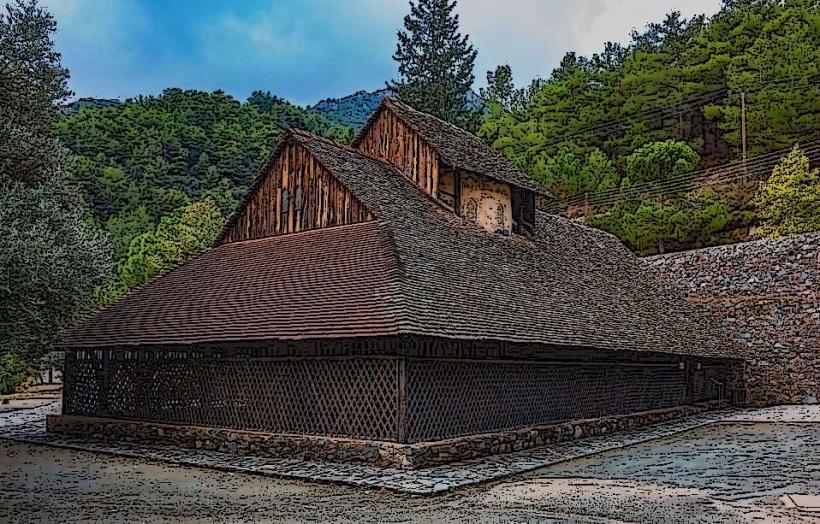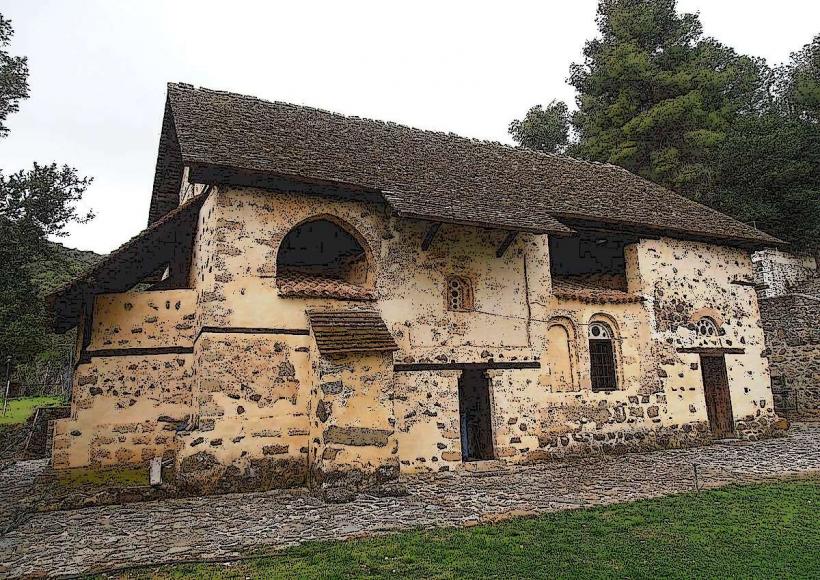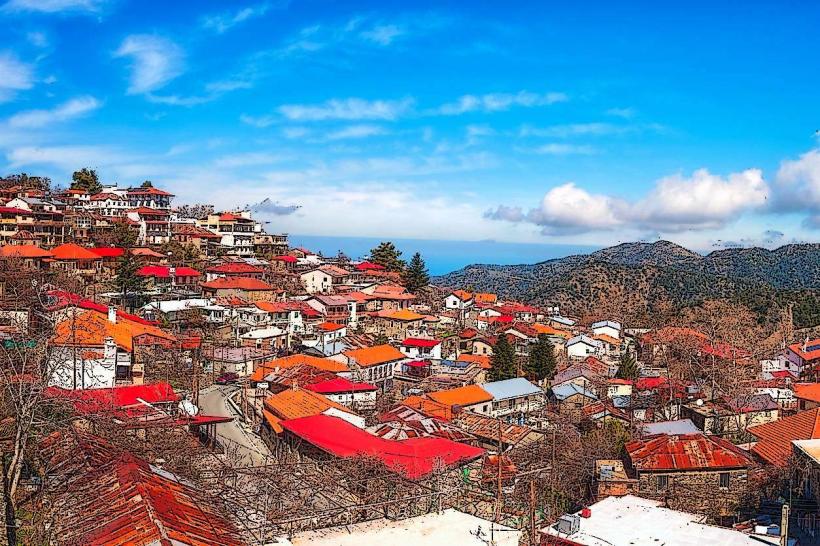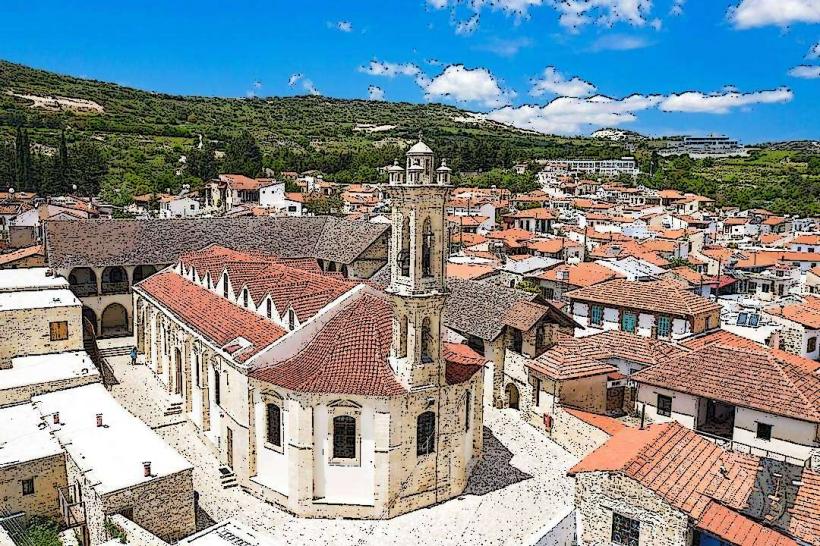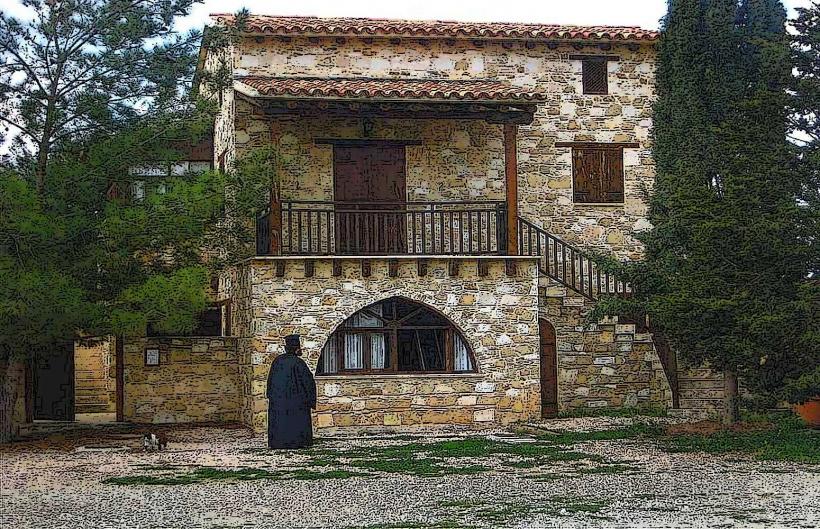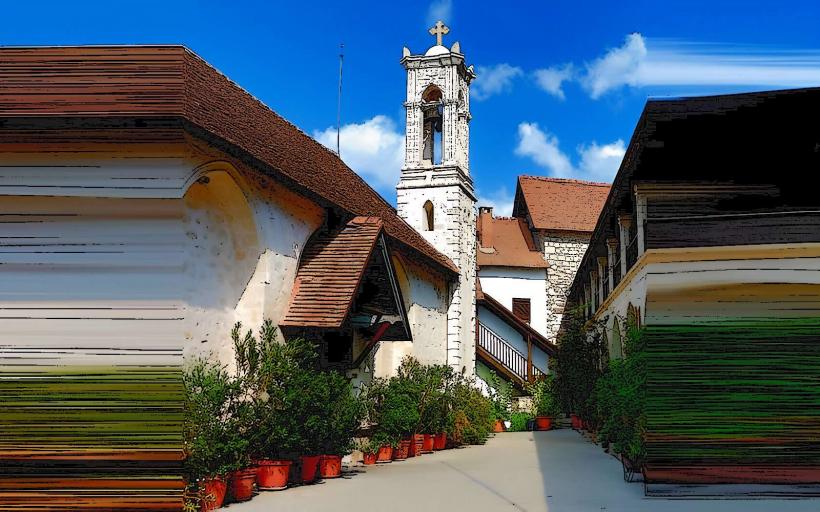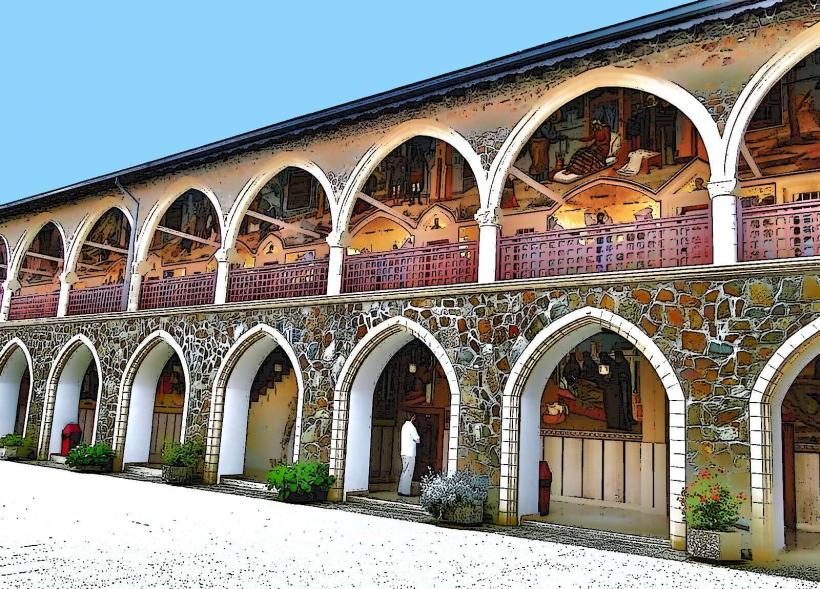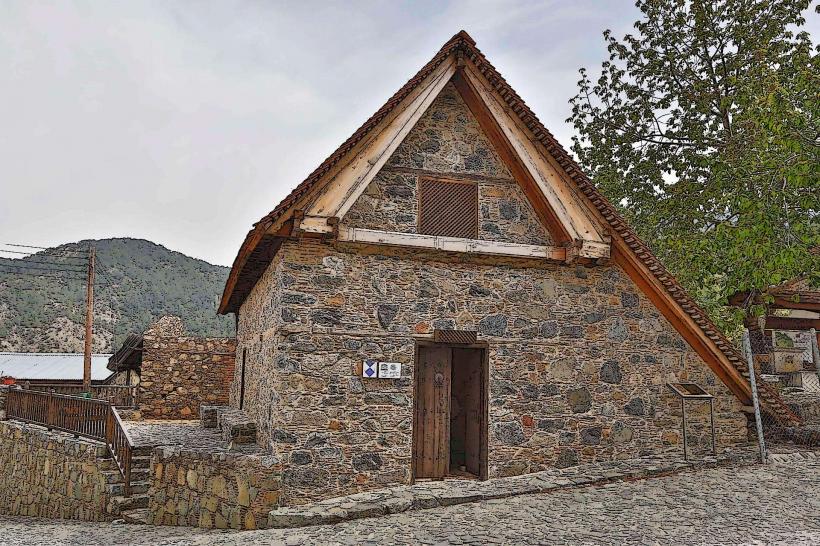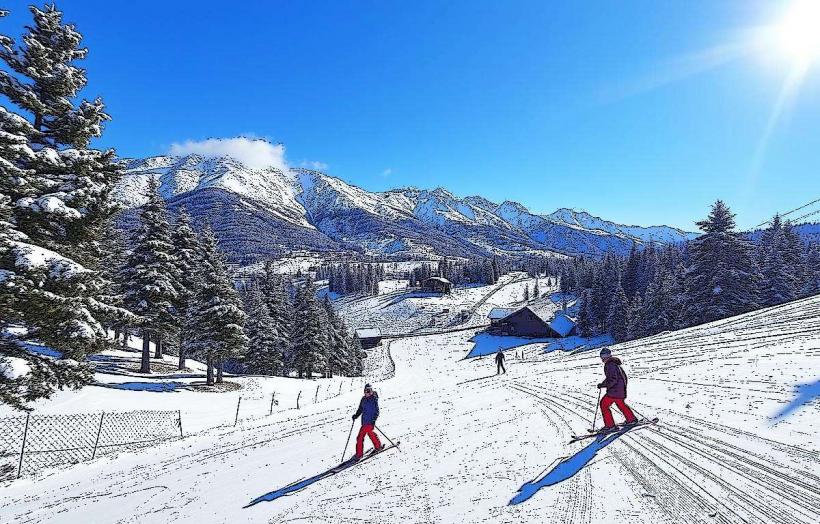Information
City: TroodosCountry: Cyprus
Continent: Europe
Troodos is a mountain range located in the central part of Cyprus, renowned for its scenic beauty, rich history, and cultural significance. The Troodos Mountains are the largest mountain range on the island, stretching across the southern and western parts of Cyprus. Known for their lush landscapes, charming villages, historical monasteries, and outdoor activities, the Troodos range is a popular destination for nature lovers, hikers, and those seeking to explore the island’s cultural heritage.
1. Geography and Location:
- The Troodos Mountains are situated in the central region of Cyprus, extending across the districts of Limassol, Nicosia, Paphos, and Larnaca.
- The range spans approximately 80 km from east to west and is centered around the highest peak, Mount Olympus (Chionistra), which reaches an elevation of 1,952 meters (6,404 feet) above sea level. This makes it the highest point on the island.
- The mountains are characterized by dense pine forests, rocky peaks, valleys, and rivers that create a stunning natural landscape. The area also features several waterfalls, streams, and nature trails that attract both locals and tourists year-round.
2. History and Cultural Significance:
- The Troodos Mountains have played a central role in the history and culture of Cyprus. In ancient times, the range was home to various Cypriot cities and towns, and it was a strategic area for defense and settlement.
- The mountains were a key region during the Byzantine Empire, with the area serving as a retreat from the coastal areas, which were vulnerable to pirate attacks.
- The region is also known for its Christian monasteries and churches, many of which were built in the medieval period and are of great religious and historical importance. Several of these monasteries are UNESCO World Heritage Sites, such as the Kykkos Monastery and the Trooditissa Monastery.
- The Troodos range also has a strong connection to the Cypriot independence movement in the 1950s, as the mountains provided a hideout and base for resistance groups.
3. Flora and Fauna:
- The Troodos Mountains are home to a variety of flora and fauna, making them a hub for biodiversity. The area is a designated Nature Reserve and a haven for wildlife enthusiasts.
- The mountains feature dense pine forests (mainly Calabrian pine and black pine), as well as areas of oak, cedar, and cypress trees. In the spring, the range is covered with a blanket of wildflowers, including orchids, anemones, and tulips.
- The fauna of Troodos includes species such as wild boar, foxes, hares, and various bird species, including griffon vultures and eagles. The region is also known for its population of the Cyprus mouflon, a wild sheep endemic to Cyprus.
- The Troodos range is also an important area for birdwatching, with several species of migratory birds passing through the region, particularly during spring and autumn.
4. Towns and Villages:
- The Troodos Mountains are dotted with charming villages that have retained much of their traditional character. These villages are often built with local stone and are characterized by narrow streets, stone-built houses, and cobblestone paths.
- Some of the most popular villages in the Troodos region include:
- Platres: One of the largest and most popular mountain resorts, known for its cool climate, hiking trails, and proximity to Caledonia Falls.
- Omodos: A picturesque wine-producing village known for its vineyards, traditional wine presses, and the Monastery of the Holy Cross.
- Kakopetria: A village famous for its preserved traditional architecture and proximity to the Marathasa Valley.
- Moutoullas: A charming village known for its narrow streets and stone-built houses, offering a peaceful atmosphere.
- Foinikaria: A small village with a rich history, known for its proximity to ancient sites and Cypriot traditions.
- The villages of the Troodos region offer visitors a glimpse of traditional Cypriot life, with local taverns serving Cypriot cuisine, and small shops selling handmade crafts and traditional products.
5. Natural Attractions:
- The Troodos Mountains are a haven for nature lovers, offering numerous opportunities for hiking, birdwatching, and outdoor exploration. The region is crisscrossed with several well-marked nature trails, such as the Atalanti Trail and the Artemis Trail, which provide stunning views of the landscape, forests, and distant coastlines.
- The Troodos Waterfalls are a key attraction, with several beautiful waterfalls, including:
- Caledonia Falls: The tallest waterfall in Cyprus, located near Platres.
- Millomeris Waterfall: Another scenic waterfall located near the village of Pano Platres.
- The region also boasts scenic mountain lakes, such as the Cineplex Reservoir and the Yermasoyia Reservoir.
6. Monasteries and Churches:
- The Troodos Mountains are renowned for their Byzantine monasteries and churches, many of which are UNESCO World Heritage Sites. These religious sites are famous for their ancient architecture, frescoes, and historical significance.
- Kykkos Monastery: One of the most famous and wealthiest monasteries in Cyprus, located in the western part of the Troodos Mountains. It houses a revered icon of the Virgin Mary and is a major pilgrimage site.
- Trooditissa Monastery: Known for its dedication to the Virgin Mary, this monastery is famous for its historic religious artifacts and peaceful setting.
- Panagia tou Araka Church: A medieval church known for its well-preserved Byzantine frescoes, located in the village of Lagoudera.
- Agios Nikolaos tis Stegis Church: An ancient church known for its remarkable frescoes, located near the village of Kalopanayiotis.
- Church of Panagia Trikoukkia: A small church with beautiful frescoes, located in the village of Pano Kivides.
7. Activities and Tourism:
- Hiking: The Troodos Mountains are a prime destination for hiking, with various trails suitable for all levels of experience. These trails take visitors through scenic forests, valleys, and hilltops, offering panoramic views of the surrounding landscape.
- Cycling: The region is also popular for mountain biking, with several trails that challenge cyclists while offering spectacular views.
- Skiing: During the winter months, Mount Olympus becomes a ski resort, with the Cyprus Ski Club operating ski slopes and facilities for snowboarding and cross-country skiing.
- Wine Tasting: The Troodos region is known for its wine production, and visitors can explore several vineyards and wineries, particularly in villages like Omodos and Agios Nikolaos. Wine tours offer a chance to sample Cypriot wines, including the island’s famous Commandaria.
- Birdwatching: The mountains are a prime location for birdwatching, particularly in the spring and autumn when migratory birds pass through the region. Visitors can spot a variety of species, including griffon vultures, eagles, and woodpeckers.
8. Climate:
- The climate in the Troodos Mountains is Mediterranean, with mild winters and cool summers. Due to the high altitude, temperatures can be significantly lower than in the coastal areas, especially in the winter months when the mountains often receive snow.
- Summer temperatures in the Troodos Mountains range from 20°C to 30°C (68°F to 86°F), making it a popular escape from the heat of the coast. Winter temperatures can drop to 0°C to 10°C (32°F to 50°F), and snowfall is common at higher elevations.
9. Conclusion:
The Troodos Mountains are a true gem of Cyprus, offering a wealth of natural beauty, cultural history, and outdoor activities. Whether you're exploring its medieval monasteries, hiking its scenic trails, or simply enjoying the tranquil atmosphere of its villages, the Troodos region provides a refreshing contrast to the island’s bustling cities and coastal resorts.

